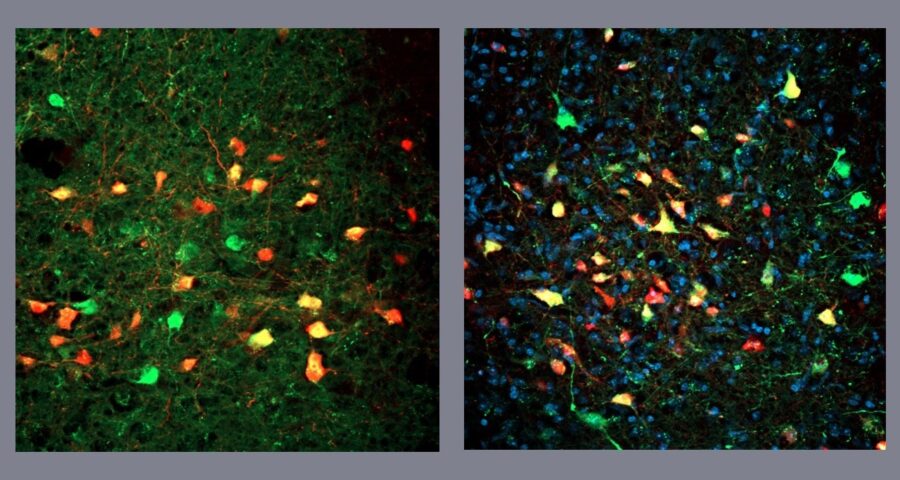Researchers from the University of California, Los Angeles (UCLA) and the Federal University of the ABC (UFABC) in São Bernardo do Campo, São Paulo state (Brazil) have identified a group of neurons deep in the brain that are directly associated with compulsive eating and food craving. The discovery, reported in an article published in Nature Communications, sheds light on the neural mechanisms behind eating disorders and could lead to the development of novel treatment approaches.
The neurons in question are located in the periaqueductal gray, a region of the midbrain at the top of the brainstem, and are known as vesicular GABA transporter cells, or VGAT cells for short. These cells use the neurotransmitter GABA (gamma-aminobutyric acid), which plays a crucial role in regulating neuronal activity and contributes to the modulation of mood, sleep, anxiety, and response to stress, among other functions.
An Accidental Discovery
The discovery of the link between VGAT cells in the periaqueductal gray and feeding was accidental. “We were interested in anxiety rather than feeding when we began investigating the neurons of the periaqueductal gray,” said Brazilian neuroscientist Fernando Reis, first and corresponding author of the article, and a postdoctoral fellow at UCLA.
When the researchers activated these cells in mice, they expected to see an inhibition of fear and panic reactions. Instead, the mice began frantically searching for food. Even in completely sated mice that should not have felt hungry, activation of the cells triggered vigorous foraging behavior and led them to eat more than usual. Conversely, when the VGAT neurons were inhibited in hungry mice, they ate less.
Optogenetics: Shedding Light on Neural Circuits
To selectively activate the neuron cluster, the researchers employed optogenetics, a technique that uses light to manipulate the activity of specific cells in the brain. They injected a genetically modified virus carrying a light-sensitive protein obtained from green algae into the mice’s brains, making the neurons sensitive to light stimulation or inhibition.
Fiber-optic cannulas were implanted in the mice to deliver blue light to the infected cells. “The light stimulus is captured by the photosensitive protein and converted into electrical activity. Cells are made more or less active according to the wavelength of the light emitted,” said Juliane Ikebara, a co-author of the article.
The mice’s behavior changed drastically in response to the blue light, with well-fed, sated animals charging off in pursuit of insects to devour. Mapping of the neural networks involved showed that the increase in GABA affected areas deep inside the brain, such as the zona incerta, a thin layer of gray matter below the thalamus.
The researchers believe that if this circuit is overactive in humans, a person might feel more rewarded by eating or crave more food even on a full stomach, and vice-versa. While the findings can’t be directly tested in humans at present, future studies in monkeys could indicate whether similar mechanisms are at play.
The discovery of this specific brain region’s role in compulsive eating and food craving could pave the way for novel approaches to treating eating disorders such as binge eating and anorexia. The group has embarked on new studies to investigate whether neuron stimulation induces cravings for specific types of food and other aspects of this intriguing neural circuit.


